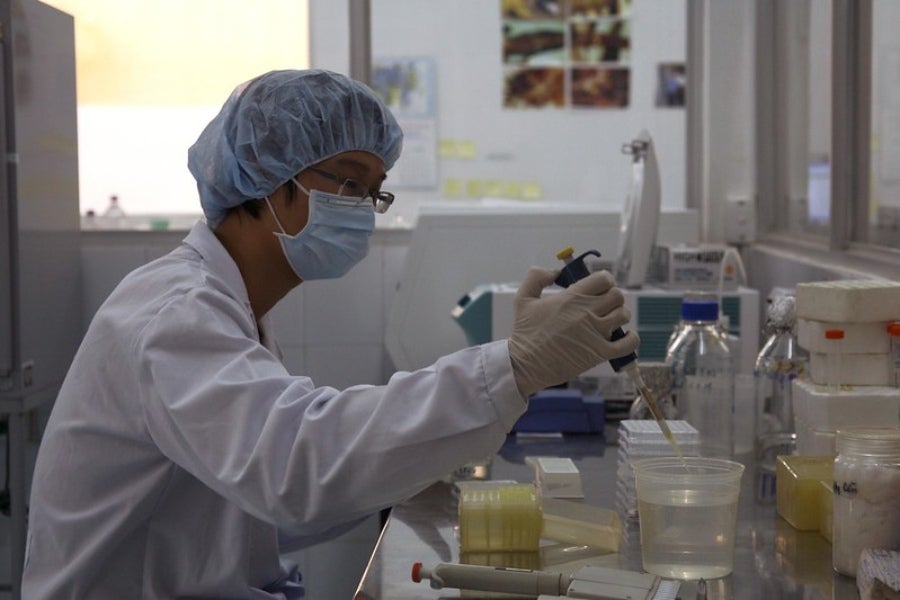Not a day passes without us being bombarded by the rapidly evolving medical literature and media on the hitherto unknown COVID-19. Rightfully so, as we now have an outbreak with more than 100,000 cases confirmed globally.
Yet, I cannot help but wonder how the general public is dealing with such an onslaught of information, if I, as a trained physician, epidemiologist and a global public health practitioner, find it too much to take in and digest. How do we expect a lay person to sift through it all, separate the chaff from the grain, avoid fear mongering - No, you do not get COVID-19 if you receive a package from China, or eat in a Chinese restaurant - and stick with the most relevant information and the essentials for behavioral change? This is ultimately what counts the most:, arming people with the right messaging and instructions for compliance with the science-based best practice. With local community transmission in about 20 countries across several regions of the globe, we must ask ourselves could we have done better?
To answer that question, let us rewind a bit to early January, and skip what caused the outbreak. Human ecology is increasingly overlapping with animal ecology – think of the clearance of the Amazon for farming and livestock, or of the felling of Kalimantan forest tapestry for palm oil production. Zoonoses are bound to emerge with more frequency as rapid environmental and climatic changes occur, and as we human beings encroach upon the territoriality of animals, including those that are vectors of zoonotic diseases. And we do trap, handle and consume many of those animals, often with total disregard for basic food hygiene.
Once the genie is out of the bottle, which actually may have been a few weeks prior to the first reported cases, what mattered most was quickly figuring out the properties and genomic makeup of the underlying virus, not only to kickstart the process of developing a vaccine and drugs, but also to acquire the much-needed information on its transmission dynamics. My aim here is to focus on the latter.
By now we have all heard of the basic reproduction number, R0 - R naught, or R zero, as it is called; that is, the number of new cases that one case could generate in a usually susceptible, non-immune population. We all know that if its value is bigger than one (R0 >1) we have transmission, meaning that one infected person will transmit the disease to more than one person. For COVID-19, the reproduction number, or R0, is estimated to be around 2.2 (higher than seasonal influenza).[1] For public health interventions to prevent and contain the transmission, the value itself is less important than understanding and acting on the four components which all together help us estimate its value. First is the duration (D) of the infectivity – not of the disease itself – but of the COVID-19 illness, from one sick individual to an otherwise healthy individual. This is all the more important if infectivity begins before the end of the incubation period, that is before the patient becomes symptomatic, as it appears to be the case for COVID-19.
The second component is the opportunity (O) to transmit the virus to another person. This depends very much on the social interactions of the infected person with their family, community, workplace, or school; while in transit by air, sea, or land; or in any other mass gathering (soccer match, pilgrimage, rock concert, to name a few) while being infected and contagious. If the person remains totally isolated by virtue of being very sick or hospitalized the (O) would have a value of zero, meaning no onward transmission! This would apply to only a few of the infected.
The third component is the transmissibility (T) of the virus. Assuming there is an opportunity to transmit, the transmission dynamics of the virus and the nature of interpersonal contact must be considered. Respiratory viruses hop from one individual to another through airborne droplets emitted by coughing or sneezing; or via contaminated objects (such as faucets, handrails, doorknobs, or poles on buses). The likelihood of effective transmission depends on the nature of the contact as well as on ambient parameters such as air pressure, humidity, and temperature, affecting how long the droplet remains suspended in the air and how far it travels.
The nature of interpersonal contact is key to transmissibility. I belong to a culture where we greet each other warmly, not only with a handshake, but also with a hug and kisses on the cheek. I have also lived in a culture where people keep their distance from each other when they meet, greeting each other by bringing their hands together in front of their chest, with a gentle bow. One does not have to be a rocket scientist to guess which type of greeting would be, all other things being equal, more prone to transmission!
The final component in the rate of transmission is the susceptibility (S) of the individual exposed to the virus. Are they an infant, a child, a pregnant woman, or an elderly person? Do they have an existing health problem or a compromised immune system, or have they already had the viral infection and became immune as a result?
There are two take-home messages from this short synopsis of epidemiology. First, without a vaccine or cure, we have no control over the duration (D) of infectivity –which still is the case with COVID-19. We have only limited control of the opportunity (O) for transmission given the ability of the virus to transmit before symptoms appear, undermining the effectiveness of case isolation. But there remains a lot that we could do to minimize the opportunity (O), transmissibility (T) and susceptibility (S). Finding the Index (or first) case and rapidly tracking and isolating their contacts are key to stopping the fire before it spreads. This requires serious preparedness.
Unfortunately, most countries (based on the 2019 Global Health Security Index scores) do not appear to have the needed surveillance, case detection and diagnostic capacities to stop public health threats such COVID-19 before it spreads. The report says no country is fully prepared for epidemics and pandemics, and most countries in Sub-Saharan Africa are least prepared. These health systems need major investment in training, laboratory capabilities and case management of the infected in properly equipped healthcare settings. Strengthening the preparedness and response capacity of any country is strengthening the capacity of all countries.
The second take-home message is that public health messaging can have a real impact in terms of changing attitudes and behaviors. We all know that we need to wash our hands frequently and wear a mask if we are around others while infected. Equipping people with the essential information for behavioral change in times of a pandemic can instill a sense of communal responsibility for the global common good.
Key behaviors include conscientious reporting and testing when the viral infection is suspected, voluntary social distancing and limiting unnecessary travel – with the added carbon footprint co-benefits, if I may add. We must also be grateful to overloaded and exhausted health workers grappling with surging caseloads by ensuring that we do not use their services unnecessarily, so they can focus on the symptomatic and severe cases , the very young, pregnant women, the elderly, and those with existing pre- conditions who remain the most vulnerable. All these require strong to-the-point public health messages on the four key components outlined above![2] Artificial intelligence and mobile applications could potentially be harnessed for live monitoring of these four parameters to ease the burdens of surveillance, case detection, isolation, social distancing, and forecasting where efforts should be directed.
A final word. Like all animate beings, viruses want to live and reproduce. They mutate and evolve to increase their virulence, odds of transmissibility and survival. At present, COVID-19 appears to have a similar or higher rate of reproduction (R0) compared to other coronaviruses such as SARS and MERS, but it appears to be less fatal, at least for now.[3] COVID-19 could become a seasonal occurrence like influenza, or in the worst scenario, a true pandemic. But Spring is around the corner in the northern hemisphere, and the rising temperatures and humidity are bound to affect the transmission dynamics, most likely for the better.[4] Regardless, it is time for the global community to become truly global. We are all weakly prepared for pandemics if any country is weak . That is why we have international health regulations for countries to comply with, and why we help those whose means are insufficient to do so. We all are in the same boat and live under the same sky. Animals and humans!
For more information on how to protect yourself from the new coronavirus, refer to the World Health Organization’s website.
[1] New literature contests WHO’s estimate, and claims that is higher, at around 3.3.
[2] The (D), (O), (T) and (S) comes from what Adam Kucharski from the London School of Hygiene & Tropical Medicine refers to as “DOTS” in his book “Rules of contagion”. I refrained from using the acronym because of the potential confusion with DOTS as in Directly Observed Treatment, Short Course for Tuberculosis.
[3] It appears that case fatality is lower then what has been estimated given the asymptomatic cases. Yet, it is much higher in the elderly, and especially in those with existing medical conditions.
[4] Emerging literature indicate that lower temperature and humidity increase viral transmissibility, at least for seasonal influenza, but possible for other viral infections transmitted through airborne droplets or aerosols.



Join the Conversation